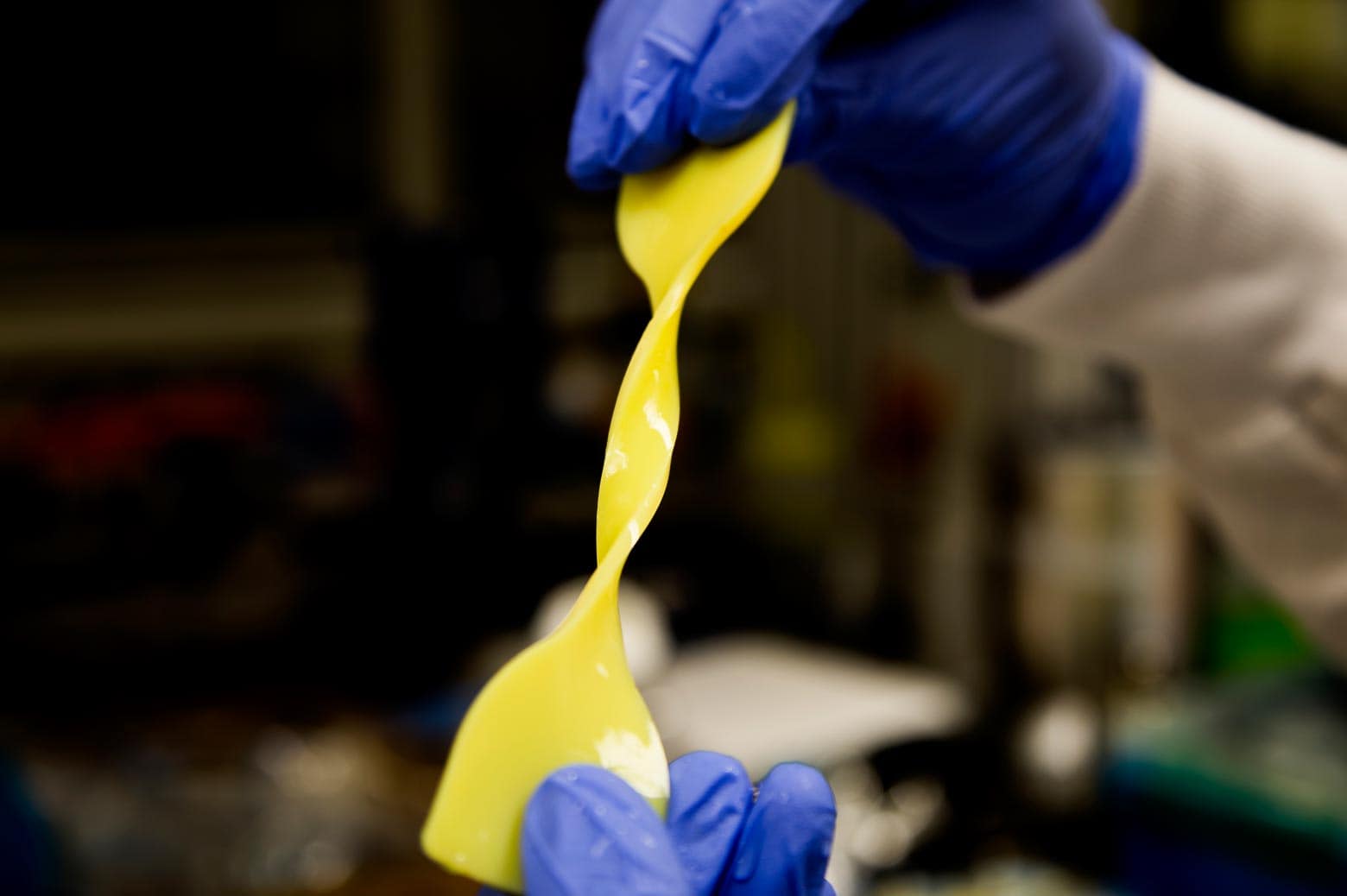
Kevlar-based artificial cartilage mimics the magic of the real thing
In spite of being 80 percent water, cartilage is tough stuff. Now, a synthetic material can pack even more H2O without compromising on strength

In spite of being 80 percent water, cartilage is tough stuff. Now, a synthetic material can pack even more H2O without compromising on strength
The unparalleled liquid strength of cartilage, which is about 80 percent water, withstands some of the toughest forces on our bodies. Synthetic materials couldn’t match it – until the “Kevlartilage” developed by researchers at the University of Michigan and Jiangnan University.
“We know that we consist mostly of water – all life does – and yet our bodies have a lot of structural stability,” said Nicholas Kotov, the Joseph B. and Florence V. Cejka Professor of Engineering at U-M, who led the study. “Understanding cartilage is understanding how lifeforms can combine properties that are sometimes unthinkable together.”
Many people with joint injuries would benefit from a good replacement for cartilage, such as the 850,000 patients in the US who undergo surgeries removing or replacing cartilage in the knee.
While other varieties of synthetic cartilage are already undergoing clinical trials, these materials fall into two camps that choose between cartilage attributes, unable to achieve that unlikely combination of strength and water content.
UNDERSTANDING CARTILAGE IS UNDERSTANDING HOW LIFEFORMS CAN COMBINE PROPERTIES THAT ARE SOMETIMES UNTHINKABLE TOGETHER.Nick Kotov
The synthetic cartilage boasts the same mechanism, releasing water under stress and later recovering by absorbing water like a sponge. The aramid nanofibers build the framework of the material, while the PVA traps water inside the network when the material is exposed to stretching or compression. Even versions of the material that were 92-percent water were comparable in strength to cartilage, with the 70-percent version achieving the resilience of rubber.
As the aramid nanofibers and PVA don’t harm adjacent cells, Kotov anticipates that this synthetic cartilage may be a suitable implant for some situations, such as the deeper parts of the knee. He also wonders whether chondrocytes might be able to take up residence inside the synthetic network to produce a hybrid cartilage. But his potential applications are not limited to cartilage: he suspects that similar networks, with different proportions of aramid nanofibers, PVA and water, may be able to stand in for other soft tissues.
“We have a lot of membranes in the body that require the same properties. I would like to evaluate the space,” said Kotov. “I will talk to doctors about where the acute need is and where this intersection of the properties will allow us to make best headway and biggest impact.”
Kotov is a member of the Biointerfaces Institute, which provides shared space for researchers from U-M’s top-ranked engineering and medical schools.
The paper, recently published in Advanced Materials, is titled “Water-rich biomimetic composites with abiotic self-organizing nanofiber network.”
The study was supported by the National Science Foundation (grant numbers ECS-0601345, CBET 0933384, CBET 0932823 and CBET 1036672), with additional funding from the Department of Defense (MURI W911NF-12-1-0407).
The University is seeking patent protection and partners to bring the technology to market.
Kotov is also a professor of chemical engineering, materials science and engineering, and macromolecular science and engineering.
Credits: